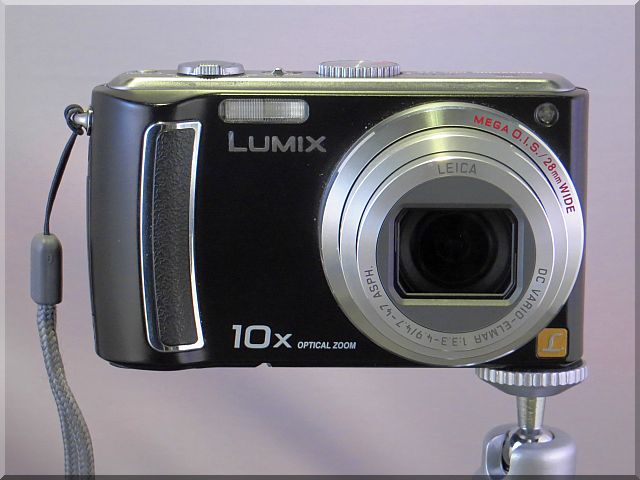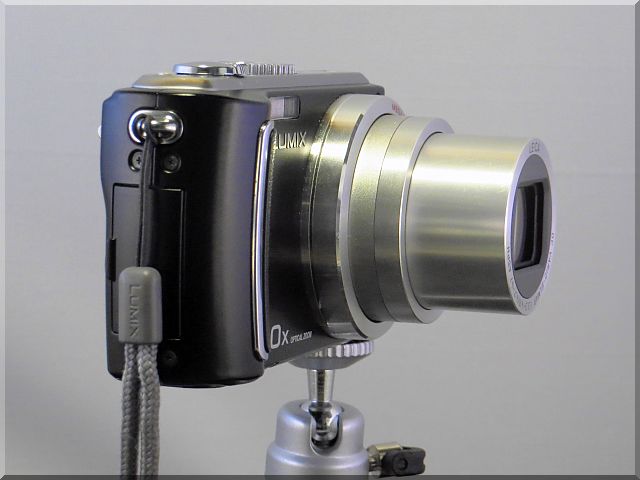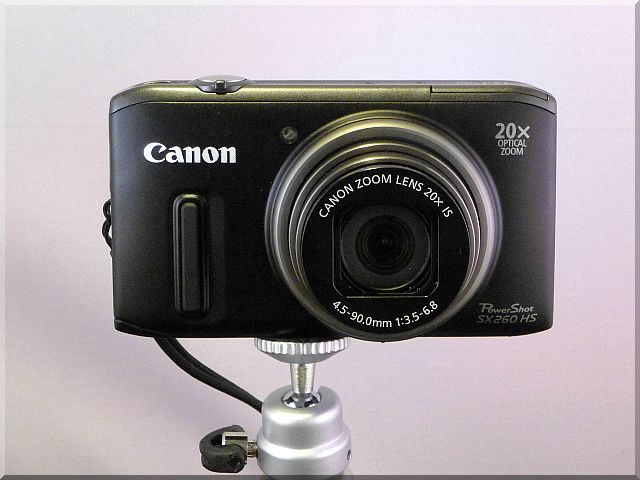Before this trip I relied on my four years old Panasonic Lumix DMC-TZ5 as a small travel camera. I used TZ5 mostly in business trips when carrying a large backpack with my DSLR would have been a total nonsense.
Panasonic created TZ5 as a versatile travel camera packed with enough features to appeal to a lot of users (see a full review here):
- 9 Mpixel full resolution with multiple aspect ratios (4:3, 3:2, 16:9)
- 10x optical zoom from 28 to 280 mm (full frame equivalent)
- Optical image stabilization (lens-shift) – 3 F-stops effective
- Relatively fast lens with an aperture ranging from F3.3 to F4.9
- Shutter speeds between 1/2000 to 60 seconds
- ISO sensitivity is in the range 100 to 1600
- Exposure compensation in the range ±2 EV (at 1/3 EV steps)
- Exposure bracketing in the range ±1 EV (at 1/3 EV steps)
- 22 scene modes and a so called “intelligent auto” mode that selects the best scene mode automatically if you don’t want to make the choice
- No manual (creative) shooting modes
- HDTV 1280 x 720p at 30 fps video clips
- Internal flash with a range between 0.6 to 5.3 m (Wide) and 1.0 to 3.6 m (Tele)
- Average speed in continuous mode (about 2.5 captures/second for 3 images)
- Average full-press lag time (about 0.5 seconds)
- Reasonable battery life (about 300 shots) using a 3.7V/1000 mAh Li-Ion battery
- Uses SD and SDHC memory cards as storage (class 6 or higher recommended)
- Connectivity is ensured through USB 2.0 High speed
- Small and light weighting only 240 grams
Recently my TZ5 began to show its age not necessarily because of the recent advances in digital camera technology that TZ5 couldn’t benefit but mostly because of mechanical problems with the zoom control (the “zoom ring” surrounding the shutter button). This is a common problem with a lot of small compacts especially if you are like me and using the zoom quite extensively.
This time I switched to another brand (n.b. not entirely new for me though) and a new small camera: Canon PowerShoot SX260 HS. I was encouraged by the good reviews for its predecessor – the SX230 HS – and by a promotion found at a local store (probably supported by Canon Canada at that time) that allowed buyers trading in their old Canon cameras (even defective) for new ones. In my case it was my daughter’s old (and defective) Canon A60 that was sitting in a drawer waiting for recycling. Finally, I was curios to compare Canon compacts against Panasonic compacts (even though they are different generations four years apart).
The compact travel camera is a very competitive market segment and Canon is aware of the fact that the other manufacturers are trying to get as close as possible to the “all-purpose” photographic device that is small and compact enough to be called the ideal travel camera. SX260 is no exception – it is a camera full of features some useful some less so:
- 12 Mpixel full resolution with multiple aspect ratios (1:1, 4:3, 3:2, 16:9)
- 20x optical zoom from 24 to 480 mm (full frame equivalent)
- Optical image stabilization – 4 F-stops effective
- Relatively fast lens with an aperture ranging from F3.5 to F6.8
- Shutter speeds between 1/3200 to 15 seconds
- ISO sensitivity is in the range 100 to 3200
- Exposure compensation in the range ±2 EV (at 1/3 EV steps)
- No exposure bracketing in the range (very disappointing for some)
- A lot of selectable scene modes and a so called “easy” mode for beginners
- Manual (creative) shooting modes: aperture priority, shutter priority and full manual exposure
- HDTV 1920 x 1080p at 24 fps video clips and slow motion (at lower resolutions)
- Internal flash with a maximum range of 3.5 m
- Average speed in continuous mode (2.4 captures/second)
- Relatively good full-press lag time (about 0.3 seconds)
- Average battery life (about 200 shots) using a 3.7V/1000 mAh Li-Ion battery
- Uses SD and SDHC memory cards as storage (class 6 or higher recommended)
- Connectivity is ensured through USB 2.0 High speed
- GPS for geo tagging
- Small and light weighting only 230 grams
As you can see, the specifications and features of this camera do not differ radically from the previous one with some exceptions that I really care about: the manual (creative) shooting modes, a much larger zoom range (especially in the wide section) and the inclusion of a GPS module for geo tagging. The things that I’m missing the most compared with my old TZ5: exposure bracketing and live histogram.
There are definitely other cameras that may look better on paper (or even in practice), but SX260 seemed a reasonable priced and attractive option for my evaluation. In the end, most of the cameras in this segment are only marginally better in one area or another.
Finally, I must admit I have a personal preference for the Canon brand. I began my journey in digital photography by playing with a Canon camera (PowerShot G1) and continued for years with different other models learning the good and the bad.
Overall, Canon is a solid brand but it is not for everyone; Canon makes excellent high-end cameras but in the low-end segment other manufacturers managed to produce better cameras.
I will analyze SX260 HS in greater details later. In fact, most of my future posts dedicated to travel will use this camera as an example.
Please be warned: this is not a professional review of a camera that I received for marketing purposes. It is my own camera that I purchased like any other amateur photographer – a personal choice based on some market research and looking for a good deal that fit my budget. As consequence, my opinions are highly subjective. I’m not recommending or endorsing a particular camera but I will tell you what I like and what I dislike while using it. Stay tuned!




